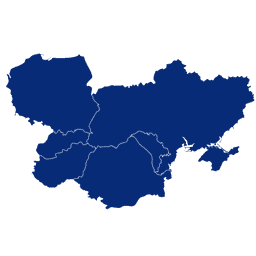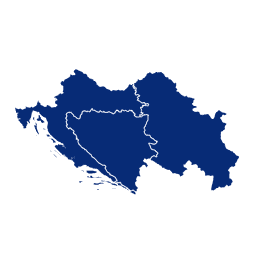Regions We Support

# Items Needed: 46,298
Eastern Europe includes Ukraine, Romania, Moldova, Hungary, Slovakia, and Poland. These countries mostly act as places of transition for people wanting to file an asylum claim in other European countries, although not always. Since Russia's war in Ukraine began, millions of Ukrainians have fled to neighbouring countries.

# Items Needed: 71,642
The number of displaced people in Northern France continuously fluctuates because the community it hosts is highly transient. Many people reach Northern France after months of travel, hoping to cross the English Channel to the UK. Calais and the surrounding area host around 2,000 refugees, which will likely increase given the situation in Ukraine. In 2021, an estimated 35,382 people attempted to cross the English Channel, almost three times as many as in 2020. This is likely due to other routes being closed or more challenging to access rather than an overall increase in people seeking asylum. Many people making this journey speak English, have family or friends in the UK, and/or have been subject to state violence in other countries, deterring them from claiming asylum there.

People Reached: 3,800
# Items Needed: 560,608
There are two core areas on the Greek mainland where NGOs are based, Thessaloniki and Athens. In the north of Greece, in Thessaloniki, displaced people may seek permanent residence or prepare to travel further west. Athens is most commonly where people are relocated from the Aegean Islands after their asylum applications have been processed. Recently, people have been transferred off the Greek islands while their asylum cases are still being processed. Some people seek permanent residence in Athens, while others only stay until arrangements are made for resettlement elsewhere in Europe.
The Aegean Islands are a group of small Greek islands in the Aegean Sea, located just a few kilometres west of Turkey. Their proximity to the Turkish coast makes them a destination for many people seeking safety in Europe. However, smugglers have employed life-threatening and money-saving tactics, such as using unsuitable boats, providing insufficient fuel to complete the crossing, supplying fake or no lifejackets, and sending boats despite poor sea conditions.

People Reached: 7,700
# Items Needed: 572,549
Once an upper-middle-income country, Lebanon is entering its third year of severe economic, political and social crises. 1.5 million refugees are at particular risk. Their rights and freedoms, economic opportunities, and relations with host communities have deteriorated amid wide-felt poverty and hardship. Lebanon's largest displaced population is in Bekaa, which hosts 39% of total registered refugees. The lowest population is in South Lebanon, with 90,832 registered refugees. Since many do not get registered, the actual number is likely much higher.

People Reached: 4,970
# Items Needed: 50,417
The Balkan region borders the EU and Schengen zone, which makes it a standard route for transitory migrants wishing to gain asylum within the EU. The Balkans act as a transitory region for people on the move, most from Afghanistan, Pakistan, Syria, Iraq and Iran. Many people transit through in hopes of gaining entrance to Croatia or Hungary, from which they can travel to other EU states. Since the infamous EU-Turkey deal closed the Balkan Route at the Greece-Turkey border, the Balkans have had relatively few asylum applications. Bosnia and Herzegovina and Serbia have around 5000 asylum seekers, while Montenegro, North Macedonia, and Albania have fewer than 200. However, some 60,000 people travelled along the Balkan route in 2021.